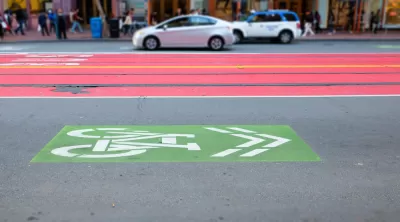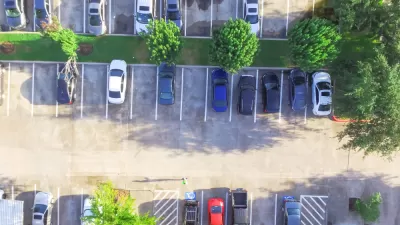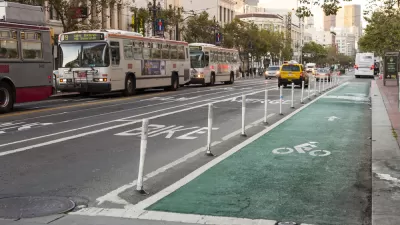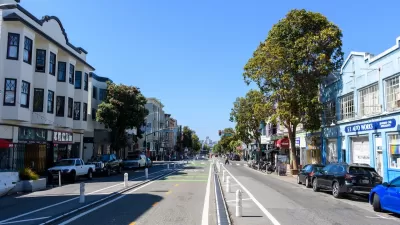Wondering what's on the agenda for bike advocates these days? The San Francisco Bike Coalition that just released a Strategic Plan that will direct political actions in 2018 and beyond.

The San Francisco Bike Coalition released a new Strategic Plan this week, providing a window into the ambitions of bike advocates as the world enters into the year 2018.
The plan lists four primary goals, each including an objective that furthers that goal and metrics that assess the success in attaining those objectives. Here's all four goals and a sample objective for each—more details can be found at the highly-readable online version of the Strategic Plan.
Demand high-quality infrastructure and push for visionary improvements to connect the city.
- Objective: Establish physically-protected bike lanes as the standard for bike improvements, especially on Vision Zero high-injury corridors.
Build public support and political power to win affordable and sustainable transportation for all San Franciscans.
- Objective: Ensure new and emerging mobility technologies and services, especially transportation network companies (TNCs) and delivery services, are safe and complement bicycling.
Grow, engage, and empower our membership to strengthen our organization and deepen community support for bicycling.
- Objective: Build an organization whose members, board, and staff reflect San Francisco’s demographics.
Introduce San Franciscans of all ages, identities, and backgrounds to the joy of bicycling and encourage more San Franciscans to bicycle more often.
- Objective: Educate all road users how to share the road safely and respectfully.
The Strategic Plan sets the agenda for the organization through 2022. The outreach that helped develop the plan included two forums, an open house, an online survey taken by over 900 members, prior to adoption by the organization's board.
FULL STORY: San Francisco Bike Coalition Strategic Plan 2018 – 2022

Planetizen Federal Action Tracker
A weekly monitor of how Trump’s orders and actions are impacting planners and planning in America.

Maui's Vacation Rental Debate Turns Ugly
Verbal attacks, misinformation campaigns and fistfights plague a high-stakes debate to convert thousands of vacation rentals into long-term housing.

San Francisco Suspends Traffic Calming Amidst Record Deaths
Citing “a challenging fiscal landscape,” the city will cease the program on the heels of 42 traffic deaths, including 24 pedestrians.

Amtrak Rolls Out New Orleans to Alabama “Mardi Gras” Train
The new service will operate morning and evening departures between Mobile and New Orleans.

The Subversive Car-Free Guide to Trump's Great American Road Trip
Car-free ways to access Chicagoland’s best tourist attractions.

San Antonio and Austin are Fusing Into one Massive Megaregion
The region spanning the two central Texas cities is growing fast, posing challenges for local infrastructure and water supplies.
Urban Design for Planners 1: Software Tools
This six-course series explores essential urban design concepts using open source software and equips planners with the tools they need to participate fully in the urban design process.
Planning for Universal Design
Learn the tools for implementing Universal Design in planning regulations.
Heyer Gruel & Associates PA
JM Goldson LLC
Custer County Colorado
City of Camden Redevelopment Agency
City of Astoria
Transportation Research & Education Center (TREC) at Portland State University
Jefferson Parish Government
Camden Redevelopment Agency
City of Claremont





























